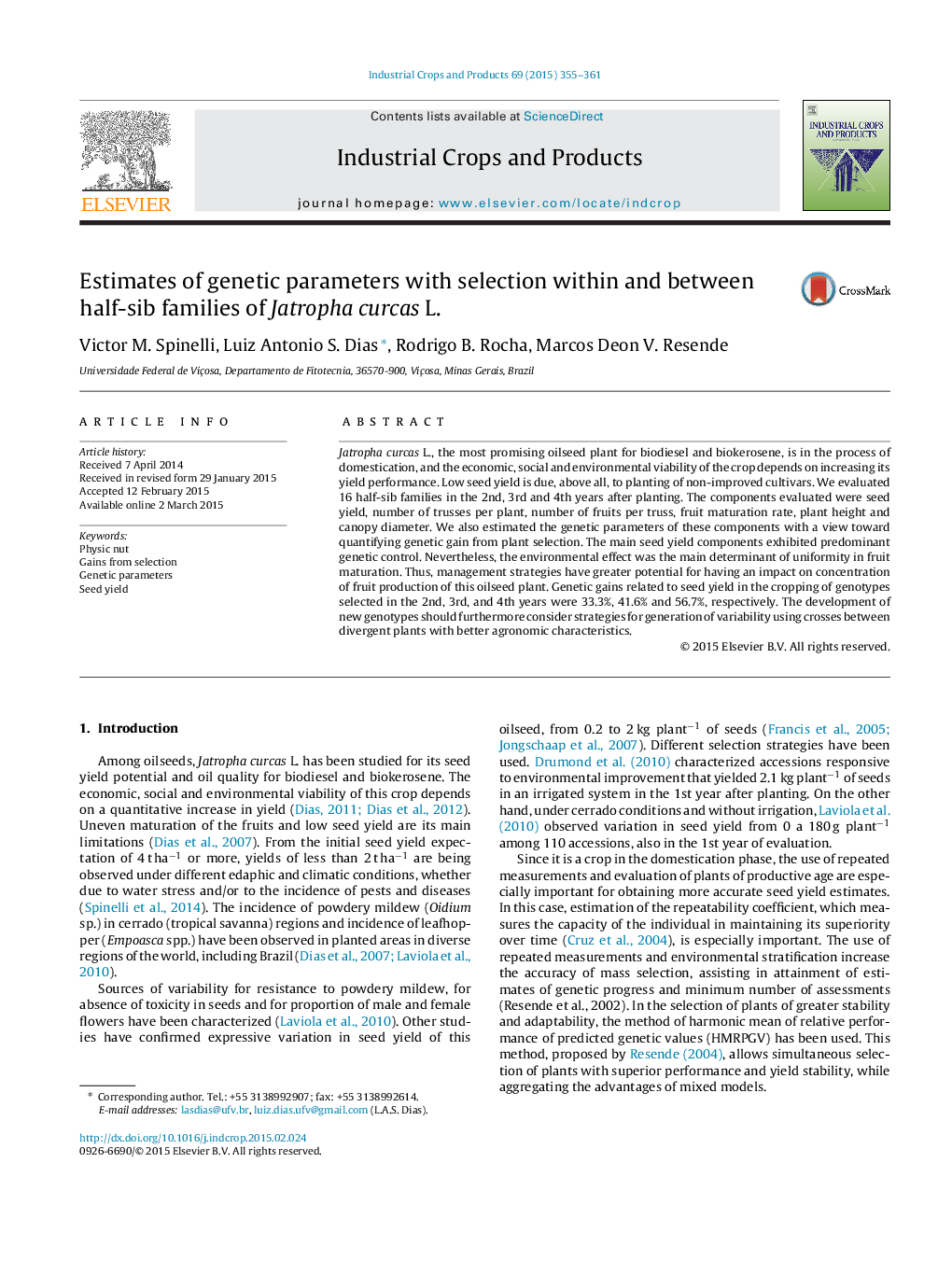| Article ID | Journal | Published Year | Pages | File Type |
|---|---|---|---|---|
| 4512999 | Industrial Crops and Products | 2015 | 7 Pages |
•Jatropha curcas’ seed yield exhibits predominant genetic control.•The environmental effect is the main determinant in the fruit maturation uniformity.•Selection within and between families using repeated measurements proved to be adequate.•Crosses between divergent plants to enlarge variability must be implemented.•J. curcas shows expressive potential for greater yield gains.
Jatropha curcas L., the most promising oilseed plant for biodiesel and biokerosene, is in the process of domestication, and the economic, social and environmental viability of the crop depends on increasing its yield performance. Low seed yield is due, above all, to planting of non-improved cultivars. We evaluated 16 half-sib families in the 2nd, 3rd and 4th years after planting. The components evaluated were seed yield, number of trusses per plant, number of fruits per truss, fruit maturation rate, plant height and canopy diameter. We also estimated the genetic parameters of these components with a view toward quantifying genetic gain from plant selection. The main seed yield components exhibited predominant genetic control. Nevertheless, the environmental effect was the main determinant of uniformity in fruit maturation. Thus, management strategies have greater potential for having an impact on concentration of fruit production of this oilseed plant. Genetic gains related to seed yield in the cropping of genotypes selected in the 2nd, 3rd, and 4th years were 33.3%, 41.6% and 56.7%, respectively. The development of new genotypes should furthermore consider strategies for generation of variability using crosses between divergent plants with better agronomic characteristics.
